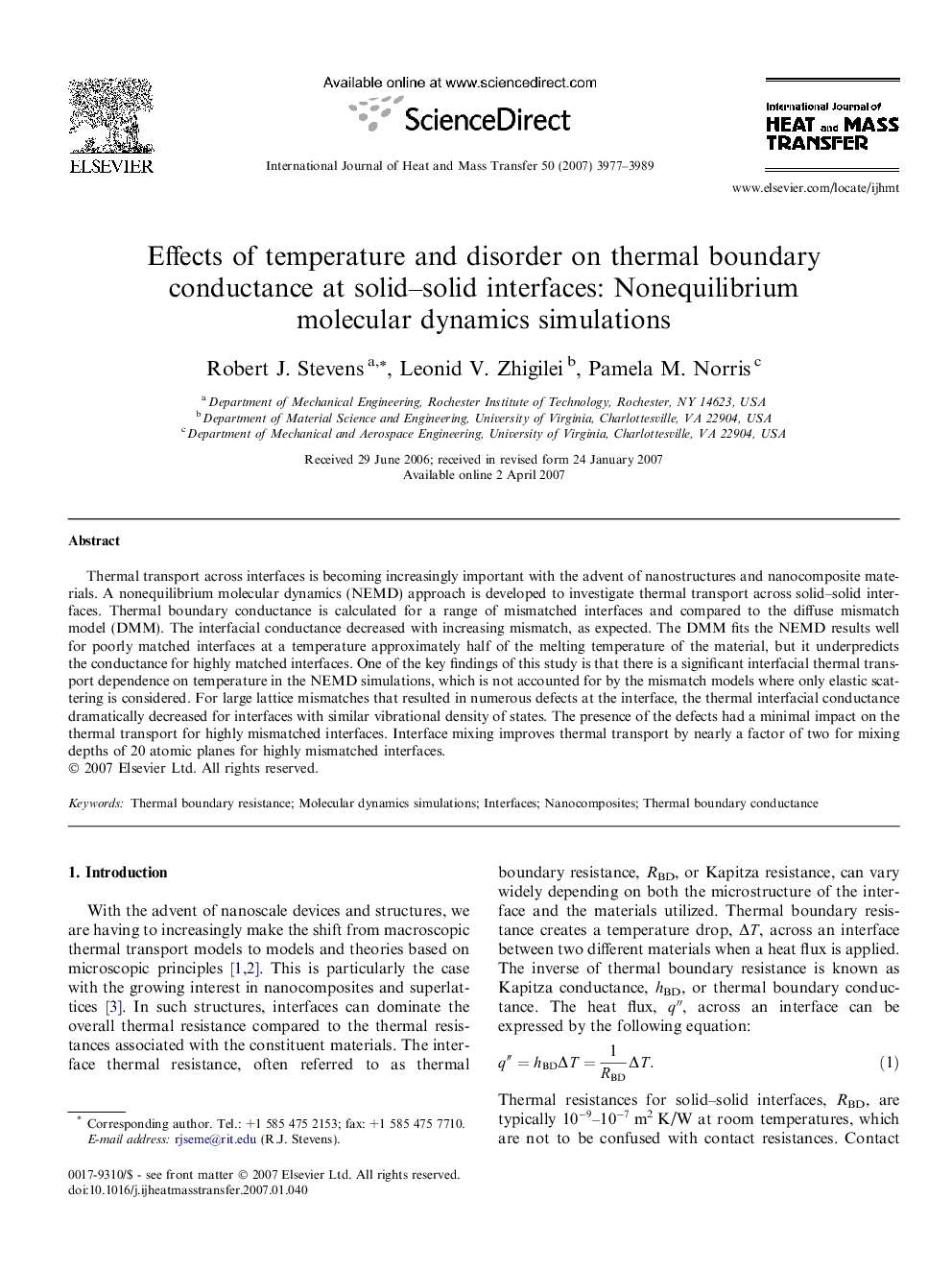| Article ID | Journal | Published Year | Pages | File Type |
|---|---|---|---|---|
| 663081 | International Journal of Heat and Mass Transfer | 2007 | 13 Pages |
Thermal transport across interfaces is becoming increasingly important with the advent of nanostructures and nanocomposite materials. A nonequilibrium molecular dynamics (NEMD) approach is developed to investigate thermal transport across solid–solid interfaces. Thermal boundary conductance is calculated for a range of mismatched interfaces and compared to the diffuse mismatch model (DMM). The interfacial conductance decreased with increasing mismatch, as expected. The DMM fits the NEMD results well for poorly matched interfaces at a temperature approximately half of the melting temperature of the material, but it underpredicts the conductance for highly matched interfaces. One of the key findings of this study is that there is a significant interfacial thermal transport dependence on temperature in the NEMD simulations, which is not accounted for by the mismatch models where only elastic scattering is considered. For large lattice mismatches that resulted in numerous defects at the interface, the thermal interfacial conductance dramatically decreased for interfaces with similar vibrational density of states. The presence of the defects had a minimal impact on the thermal transport for highly mismatched interfaces. Interface mixing improves thermal transport by nearly a factor of two for mixing depths of 20 atomic planes for highly mismatched interfaces.
